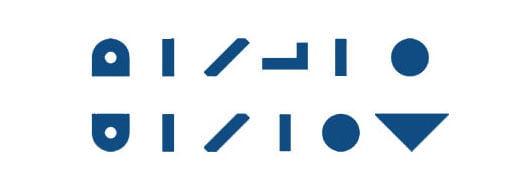نوع مقاله : مقالۀ پژوهشی
نویسندگان
- منصوره محسنی 1
- ساجده خراباتی 2
1 مربیِ دانشکدة مهندسی معماری و شهرسازی، دانشگاه صنعتی شاهرود، شاهرود، ایران.
2 مربی دانشکدة مهندسی معماری و شهرسازی، دانشگاه صنعتی شاهرود، شاهرود، ایران.

باغ نظر (ماهنامه)
دوره 18، شماره 98
مرداد 1400
صفحه 82-67
بیان مسئله: انعطافپذیری یکی از مفاهیم مطرح در معماری سنتی ایران است و توجه به آن در اکثر کاربریها، بهویژه در فضاهای آموزشی بهدلیل نیازهای متغیر افراد، اهمیت زیادی داشته است. این در حالی است که امروزه نقش انعطافپذیری در مدارس جدید کمرنگ شده است. در این میان، معماری مدارس سنتی ایران واجد شاخصهای ارزندهای در حوزة انعطافپذیری است که میتوان آنها را در طراحی مدارس جدید در نظر گرفت.
هدف پژوهش: هدف این پژوهش مطالعة انعطافپذیری مدارس سنتی ایران، بررسی نحوة تغییرات انعطافپذیری این مدارس در طی دورههای تاریخیِ سلجوقی تا قاجار، و شناخت عوامل مؤثر بر انعطافپذیری مدارس سنتی بهمنظور استفاده از این عوامل در طراحی فضاهای آموزشیِ انعطافپذیر است.
روش پژوهش: این پژوهش از لحاظ هدف کاربردی و از لحاظ روش توصیفی-تحلیلی است. بدین منظور ابتدا اطلاعات مربوط به حوزة انعطافپذیری از منابع کتابخانهای استخراج شده است. در ادامه، پس از تحلیل محتوا، چهارچوب نظری مشخص شده و با روش مطالعة میدانی و شیوة استدلال قیاسیْ نمود انعطافپذیری در نمونههای موردی بررسی شده است.
نتیجهگیری: این پژوهش نشان میدهد که علاوه بر آنکه مدارس سنتی در همة دورههای مذکور انعطافپذیر بودهاند، نحوة انعطافپذیری آنها نیز، همزمان با سیر تحول کالبدی آنها و افزودهشدن عناصر کالبدی گنبدخانه و شبستان، دچار تحول شده است. بهطور کلی، در اکثر عناصر کالبدی مدارس مورد بررسی، هرچه از دورة سلجوقی به دورة قاجار نزدیک میشویم، از مؤلفة تنوعپذیریِ عملکردی کاسته میشود و تنوعپذیری فضایی، تطبیقپذیری و تغییرپذیری پررنگتر جلوه میکند. بنابراین انعطافپذیری مدارس، در این بازة زمانی، روندی روبهرشد داشته است.
عنوان مقاله [English]
A Comparative Study of Traditional Iranian Schools Flexibility from the Seljukid Era to Qajar Era
نویسندگان [English]
- Mansooreh Mohseni 1
- Sajede Kharabati 2
Problem statement: Flexibility is one of the significant concepts in traditional Iranian architecture and Its role is highlited especially in educational spaces due to crutial need of people. Today, however, the role of flexibility in new schools has diminished. Meanwhile, the architecture of traditional Iranian schools has valuable indicators in term of flexibility that can be considered in the design of new schools.
Research objective: The present study aimed to study the flexibility of traditional Iranian schools and to investigate the mode of changes in the flexibility of these schools from the Seljuk to Qajar historical era and also to identify the factors affecting the flexibility of traditional schools to use these factors in designing flexible educational spaces.
Research method: This study is applied in terms of purpose and descriptive-analytical in terms of method. For this purpose, first, data related to the field of flexibility extracted from library resources. Then, after content analysis, the theoretical framework identified and the manifestation of flexibility in case studies investigated by a field study and deductive reasoning methods.
Conclusion: This study shows that in addition to the fact that traditional schools have been flexible in all of these periods; Their flexibility has also changed along with their physical evolution and the addition of physical elements of the vault and nave. In general, in most of the physical elements of the studied schools, the farther we go from the Seljuk period and get closer to Qajar period, the component of functional diversity decreases the spatial diversity, adaptability and changeability become more prominent. Therefore, the flexibility of schools during this period has been a growing trend.
بررسی تطبیقی انعطافپذیری مدارس سنتی ایران از دورة سلجوقی تا قاجار اصل مقاله 828.82 k
صاحب امتیاز: پژوهشکده هنر، معماری و شهرسازی نظر
مدیر مسئول: دکتر سید امیر منصوری
سردبیر: دکتر احمد پوراحمد
دوره انتشار: ماهنامه
شاپا چاپی: 1735-9635
شاپا الکترونیکی: 2251-7197

















